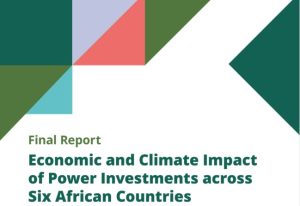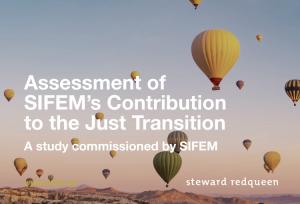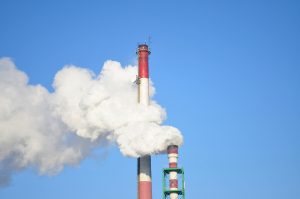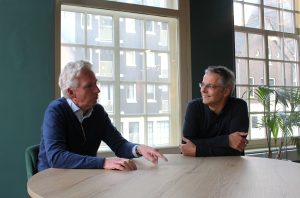Conversation series: On the energy transition with Pranav Kalra
Pranav Kalra is a Consultant based in Steward Redqueen’s Singapore office. With a background in Engineering Science (specialisation in Energy Systems), one of his focus areas is renewable energy and power sector modelling. In this Conversation Series, we sit down with him to explore some of the work he has done on this front and what makes it such an exciting field to work in.
Why is the energy transition such a tricky topic?
Energy underpins almost every activity in society – as such, the energy transition is deeply entangled with several other societal challenges. Energy is at the heart of the decarbonisation challenge. At a national level though, energy is critical for economic development, and countries look to protect their energy security.
Historically, every country has used increasing amounts of energy to spur development – there is a strong link between GDP growth and energy consumption. Although this is slowly decoupling, that just means that countries have been able to get more economic growth out of a correspondingly smaller growth in energy consumption. The growth in energy consumption is still required.
Apart from requiring more energy to grow their economies, many developing countries also have large and young fossil fuel fleets that have been installed in the last two decades. While developed countries with older fossil fuel fleets need to replace aging plants with renewable energy, developing countries need to simultaneously add more power generation capacity, replace fossil fuels with alternative sources of power, and retire relatively new coal and oil power plants.
Balancing these different challenges creates quite a puzzle. A key challenge here is keeping tabs on all the different effects a power investment can have. Policymakers and investors need to quantify not only the financial returns, but the economic, social, and environmental returns of a power investment.
Ok, so that’s no small challenge. What do we do in our energy practice to help clients navigate through those challenges?
We apply our existing perspective and methods around impact measurement and apply it to investments in power. In our impact estimation work, we use macroeconomic modelling to help our clients understand their societal impact in terms of jobs, value added, and GHG emissions. With our power modelling work, we combine macroeconomic modelling with a power model to holistically think about the development and climate effects of these investments.
The only way to contextualise the impact of an intervention in the power sector is to consider how it affects the grid of a country or region. We do so by placing interventions within a supply-demand model of a country’s power grid. The model incorporates factors that affect supply (such as availability, weather, cost of fuel) and variations in demand over time. With the model, we can compare interventions against the counterfactual, wherein the power plant or transmission line is removed from the power sector. This affects the outputs of the model, changing the number of outages, the cost of generation, and the GHG emissions. Our macroeconomic model uses these to estimate jobs and value added.
Once we have these outputs, we can build on the analysis. A common question is to check whether a particular investment is in line with national or global climate goals. Most countries have published power strategies, so we can check if a particular investment is in line with that or with their 2030/2050 Nationally Determined Contributions (their climate targets).
What excites you personally about these questions?
Personally, I like that our power projects take an abstract discussion about the positive impacts of investing in power and turn it into something tangible. It makes it possible to compare two potential investments in power and see which one makes the most social, environmental, and economic sense. Although the technical aspects of modelling are fun, I am really interested in how to communicate the impact perspective intuitively.
What are some of the trade-offs with investments in power?
Typically, we see a trade-off or balancing act between three things: increasing reliability of supply, reducing cost, and reducing GHG emissions. In most contexts, you can only pick one or two of the three.
There are exceptions, such as for countries that have access to geothermal energy, else, you have to make some trade-offs. For instance, with solar panels, decades of R&D have brought us to a point where they’re affordable and of course have no GHG emissions once installed, but the intermittency means that for most countries it doesn’t help with reliability of supply. Investments in natural gas power plants are often cost effective and reliable but this is at the expense of increasing emissions.
Another possible trade-off can be between climate mitigation and adaptation. Countries often need more electricity and energy to support climate adaptation, and natural gas often can be the cheapest source of reliable electricity. It’s key to keep both needs in account, integrating short-term and long-term thinking. We continue to work in this space in an increasingly forward-looking way, by using our models and analyses to find opportunities and inform our clients’ investment decisions.
What would one piece of advice be that you have for an investor seeking to invest in renewable energy in emerging markets?
When it comes to investing in power, there often aren’t any predictable rules of thumbs, as the local context and dynamics are critical to any intervention. Investors should take the time to understand the local challenges in the power system, especially as investing in power generation is not always needed. More investment is needed in transmission & distribution, and a lot of regions in the world can be helped with regional interconnections.
Similarly, it is critical to understand the perspectives of local stakeholders. This includes perspectives on the ground and local communities that would be most directly affected by an investment, as well as regulators and the private sector who would be responsible for delivering on the potential that an investment in power provides.


















